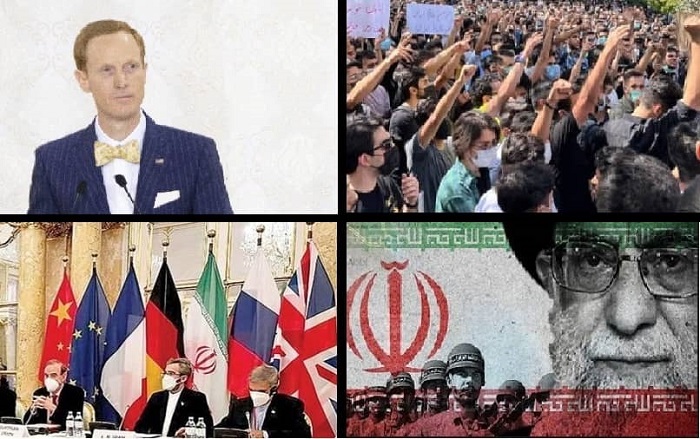
We are now in the 9th week of the Iranian uprising. Is it possible for the Iranian regime to give up and stand down if the protests continue?
The final outcome of the uprisings may seem uncertain. But what is clear and tangible at this moment is that the regime has failed to quash or at least control the situation. And it is not as if Tehran hasn’t tried. The highest authorities, including the duo of Supreme Leader Ali Khamenei and the Commander-in-Chief of the Islamic Revolutionary Guard Corps (IRGC) Hossein Salami, have on several occasions bluntly threatened protesters to return home. The fact that the protesters have not backed down is not only embarrassing for the regime, but it reveals Tehran’s fundamental cracks and weaknesses.
The IRGC and Basij forces use violent forces to prevent demonstrations. Will this affect the protests in Iran, and will they be able to push the protesters back?
So far, despite the IRGC’s heavy crackdown, the protests have persisted. This is while, according to classified information obtained by the Iranian Resistance, Salami and other senior commanders of the IRGC are leading the regime’s response. Yet protests have impacted at least 252 cities. Despite the heavy cost of participating in street protests – thus far over 660 people have been killed and more than 30,000 have been arrested – young people are unfazed and women continue to lead the uprising.
#SHEEHAN | #Interview w/ Dr. Ivan Sascha Sheehan on #IranProtests (#Arabic) | Al Bawaba News | 26 NOV 2022 #Iran #IRGC #IranRevolution #HumanRights #MiddleEast @StateDept @SecBlinken @UN @UNSC @UN_HRC #ForeignPolicy #GlobalAffairs @ProfSheehan 🌍 pic.twitter.com/olorzjFdag
— Ivan Sascha Sheehan, Ph.D. (@ProfSheehan) November 26, 2022
Can we see the return of the Iran nuclear agreement?
Even in the heyday of Western hopes for a return to the deal, Tehran was deliberately blocking it and using delay tactics, indicating that it is not serious about a mutually successful outcome.
In 2017, German intelligence said that even when the US was still part of the JCPOA, the regime attempted more than 100 times to obtain illicit nuclear technology. The Iranian Resistance has also revealed the regime’s bomb-seeking activities on multiple occasions, including ongoing research and development activities at the Parchin military site in 2017, out of reach of IAEA inspectors.
Today, with the ongoing unrest in Iran and the international public opinion shifting to the plight of the Iranian people for democracy, it has become even more untenable for western powers to pursue a deal with the devil.
Can Iran’s economic crisis with demonstrations help to take things out of the regime’s control?
According to official stats, more than two-thirds of the population live in abject poverty, and the inflation rate is skyrocketing. At the bottom of the simmering unrest is deep public antipathy toward decades of economic mismanagement, institutionalized corruption, deepening social crises, and suppression in almost every sphere of society. In these circumstances, the regime will certainly lose control. It is only a matter of time.
Will more sanctions be applied against the Iranian regime, especially after not reaching solutions to restore the nuclear agreement?
Indeed, it is imperative to reinstate the six suspended UN Security Council resolutions related to sanctions on the Iranian regime. But sanctions aren’t enough. History has shown time and again that the right policy to deal with the Iranian regime is not leniency and dialogue, but firmness and decisiveness. Western capitals must be alive to this reality.

MEK Iran (follow us on Twitter and Facebook), Maryam Rajavi’s on her site, Twitter & Facebook, NCRI (Twitter & Facebook), and People’s Mojahedin Organization of Iran – MEK IRAN – YouTub







